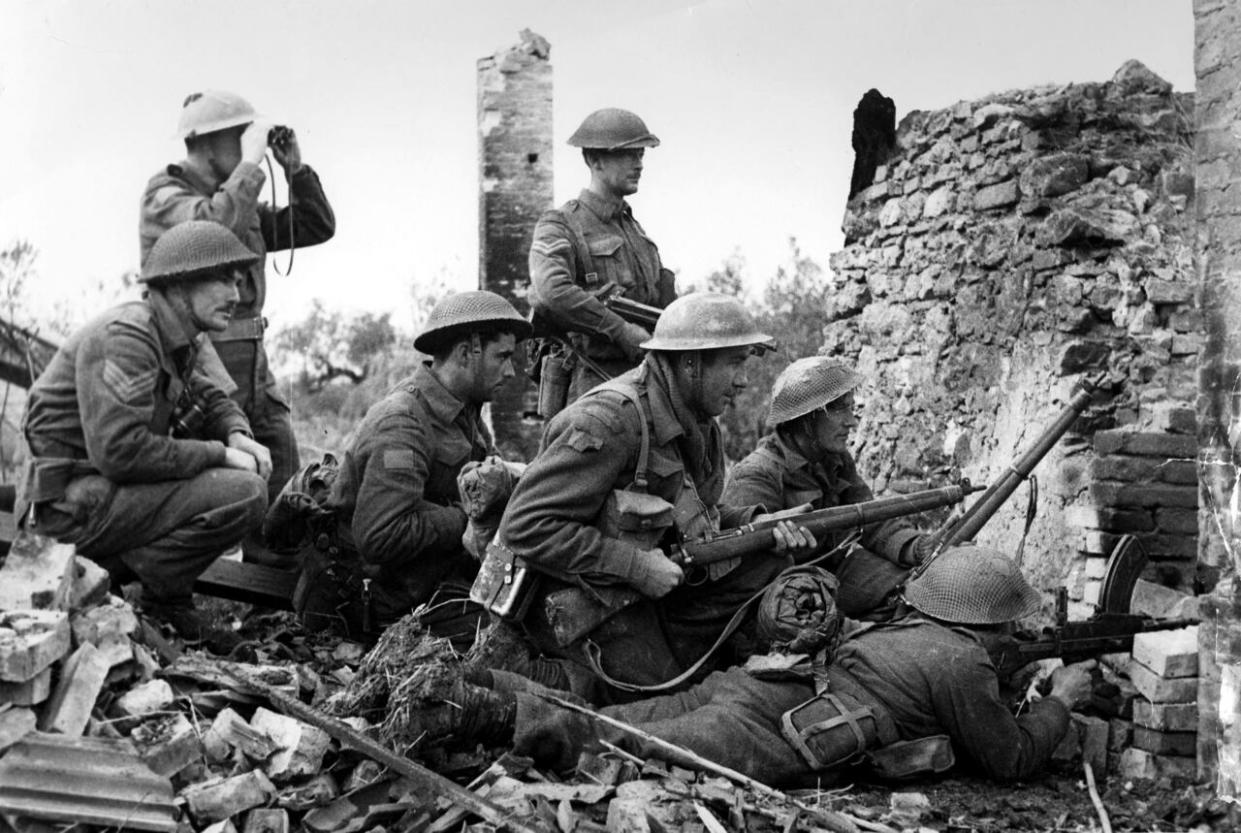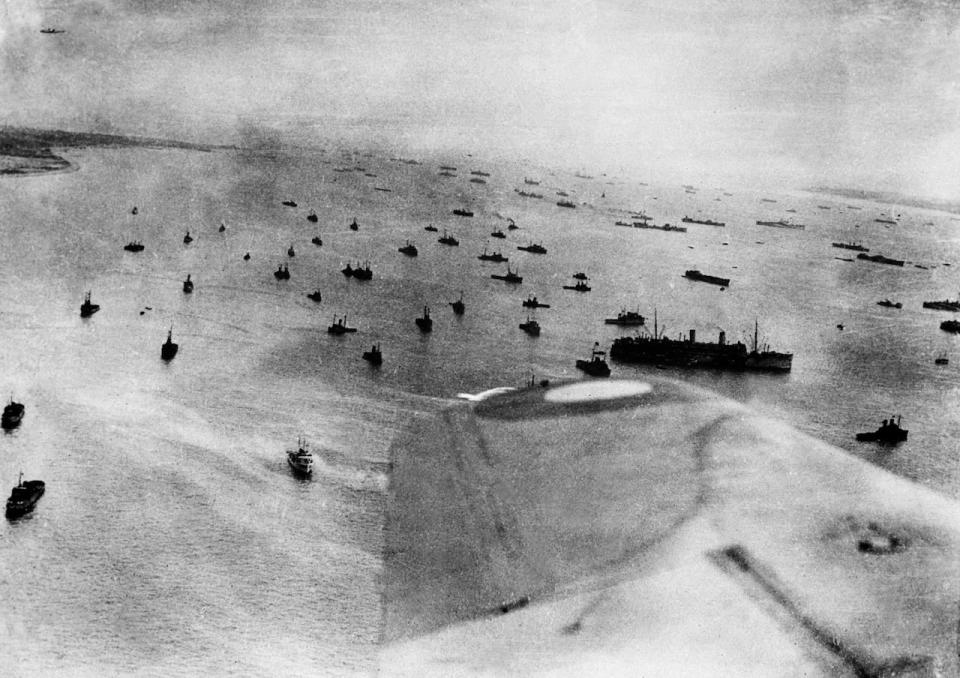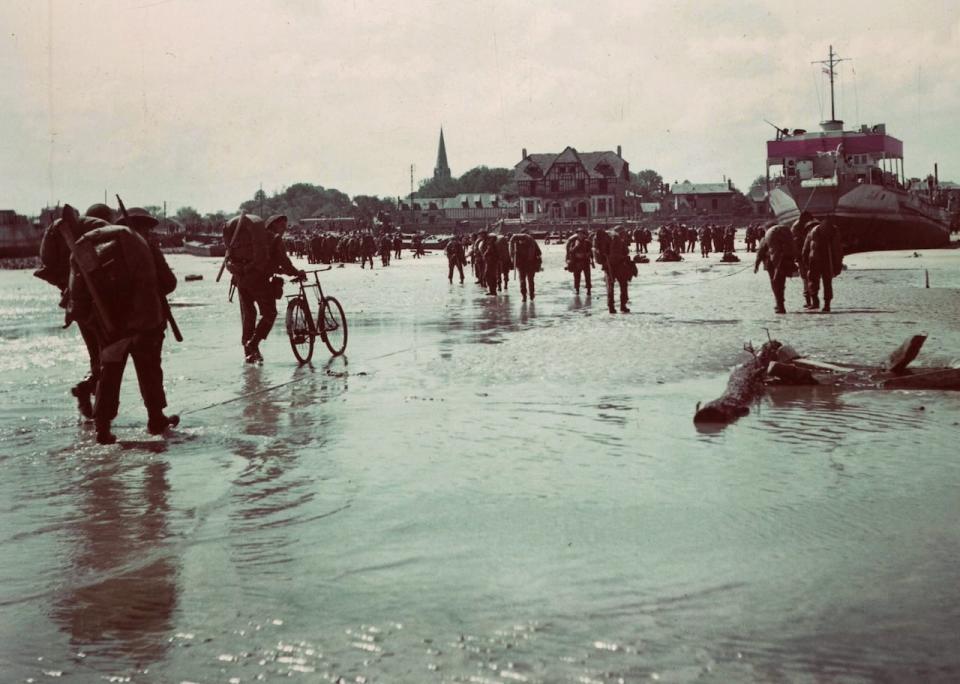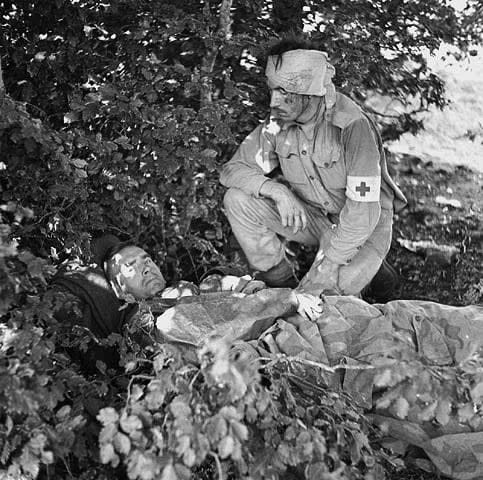Why some Allied troops fighting in WW II were dubbed D-Day Dodgers

Eighty years ago as the Allied invasion of western Europe began off the shores of Normandy, France, and eventually freed the continent of Adolf Hitler's grip, a pop culture reference emerged.
For the Allies who had been fighting in Italy, they came to be known as D-Day Dodgers.
"I think the idea got around that they somehow got off easy not being there on D-Day or not being there during that big heavy battle, but the reality is that they have been fighting very hard in Italy," said Julie Thomas, the chief curator at the Army Museum Halifax Citadel.
The Italian Campaign began in July 1943. By fighting in southern Europe, the Allies believed it would spread German manpower and make it easier to take western Europe on D-Day — June 6, 1944.
The concept of D-Day Dodgers is especially relevant to Atlantic Canadians because about three-quarters of the Atlantic Canadian units that served in the Second World War fought in Italy.

This is an aerial view on D-Day of the Allied forces engaged in Operation Overlord preparing to storm the beaches of Normandy. (STF/AFP/Getty Images)
"Only a small number by comparison go to Normandy, so the national commemoration effort that focuses so much on Normandy in northwest Europe really leaves out Atlantic Canadians," Lee Windsor, a history professor at the University of New Brunswick, previously told CBC News.
"So it's not only a forgotten campaign for the war as a whole, it's particularly troubling, I think, for Atlantic Canadian veterans stories."
Given that Rome was the first European capital to be freed, only two days before D-Day, its importance got overshadowed.
"We do focus a lot of our energy on D-Day because we know that when we opened up that third front in the West, that really did start the Germans' retreat," said Thomas.
Almost 100,000 Canadians served in Italy during the Second World War. Almost 6,000 of them were killed in action.
The origins of the term D-Day Dodgers is unclear, said Jeff Noakes, the Second World War historian at the Canadian War Museum in Ottawa.

Canadian soldiers land on a Normandy beach during the D-Day invasion. (Department of National Defence/The Canadian Press)
"It's quite often associated with Lady Astor, who is a political and social figure in the United Kingdom, who referred to the soldiers in Italy as D-Day Dodgers because they were avoiding, dodging the fighting in Normandy," said Noakes.
"But it then gets adopted and it may or may not have been something she said."
Regardless of the origins, the term became well known and even sparked a song called, fittingly, D-Day Dodgers.
Noakes said the song makes fun of the fact the D-Day Dodgers are drinking and having fun while their Allied comrades are fighting elsewhere. But the song gets darker, with the lyrics pointing to the people staying in Italy because they've died in combat.
Noakes said that among the soldiers fighting in the Italian Campaign, there's a feeling of being overlooked because of the attention the fighting in western Europe is getting.

Troops of the Carleton and York Regiment hunt for snipers in Campochiaro, Italy, in an undated photo from the Second World War. (CWM 19920085-1030)
He said one of the great things about more archival newspapers getting digitized is its helping provide more information about wartime attitudes of the public.
"You can go and look and find, you know, some letter to the editor by someone who's saying it's outrageous that you're referring to these people as D-Day Dodgers. 'My son is there, you know, and he's not dodging anything,'" said Noakes.
"The public reaction seems to have been more one of disappointment that the term was being used rather than actually accusing people of avoiding fighting."

Capt. A.W. Hardy, a medical officer with the West Nova Scotia Regiment, lies wounded, with Pte. W.E. Dexter, a unit stretcher-bearer who was wounded in the head, in Santa-Cristina d'Aspromonte, Italy, on Sept. 8, 1943. (Lieut. Terry F. Rowe/Canada. Dept. of National Defence/Library and Archives Canada/PA-115198)
Noakes said the Allies took information learned from the Italian Campaign and applied it to D-Day, such as amphibious assaults and airborne landings.
Less than a year after D-Day, the Germans surrendered to the Allies on May 7, 1945, bringing an end to the Second World War in Europe.
MORE TOP STORIES

